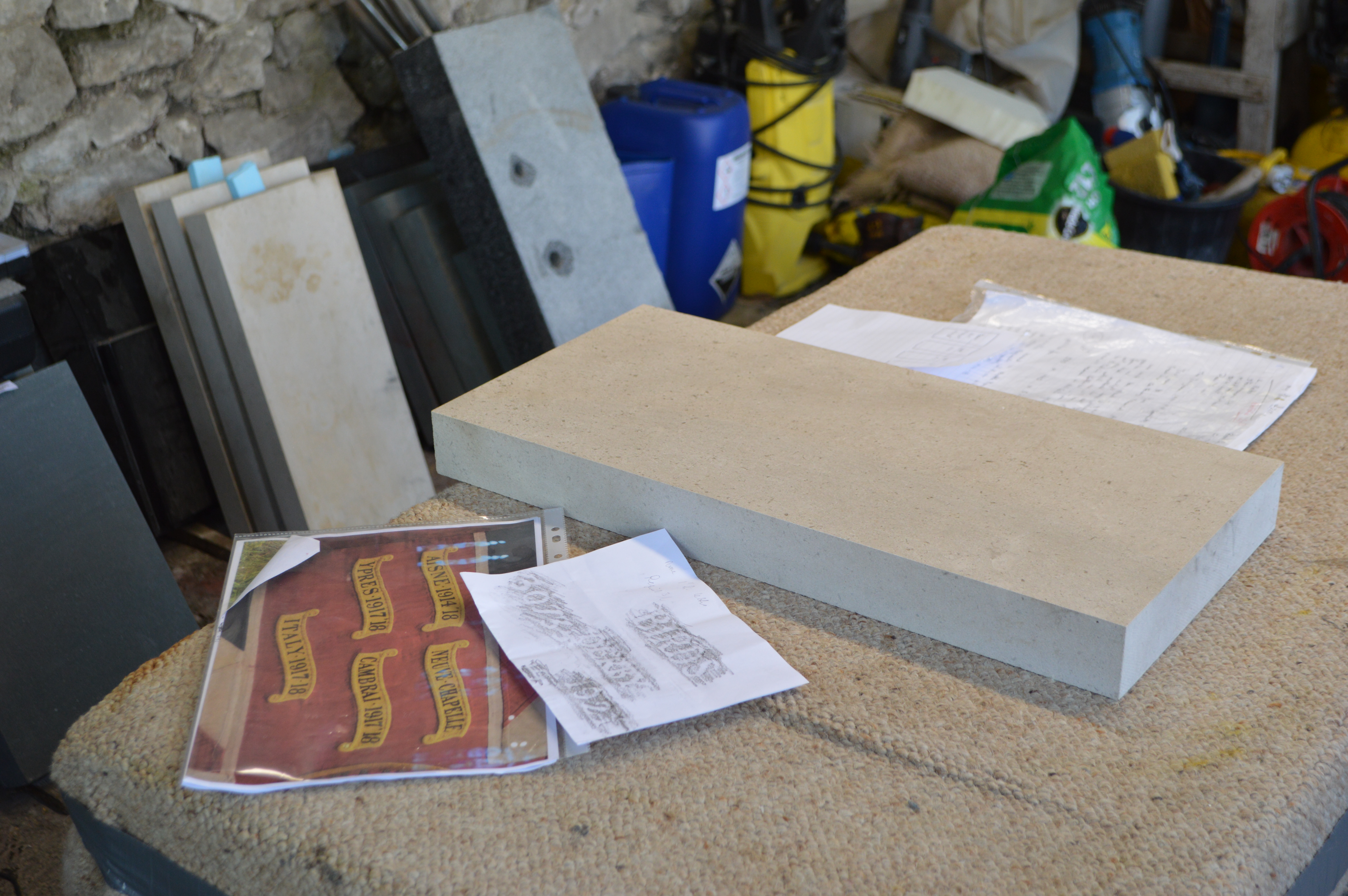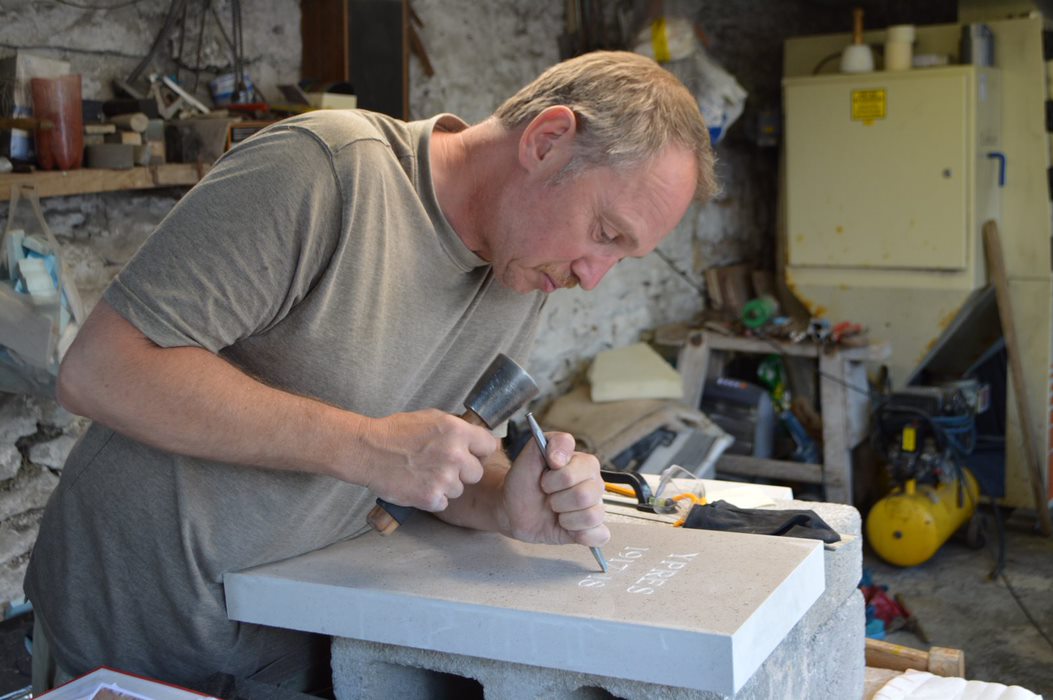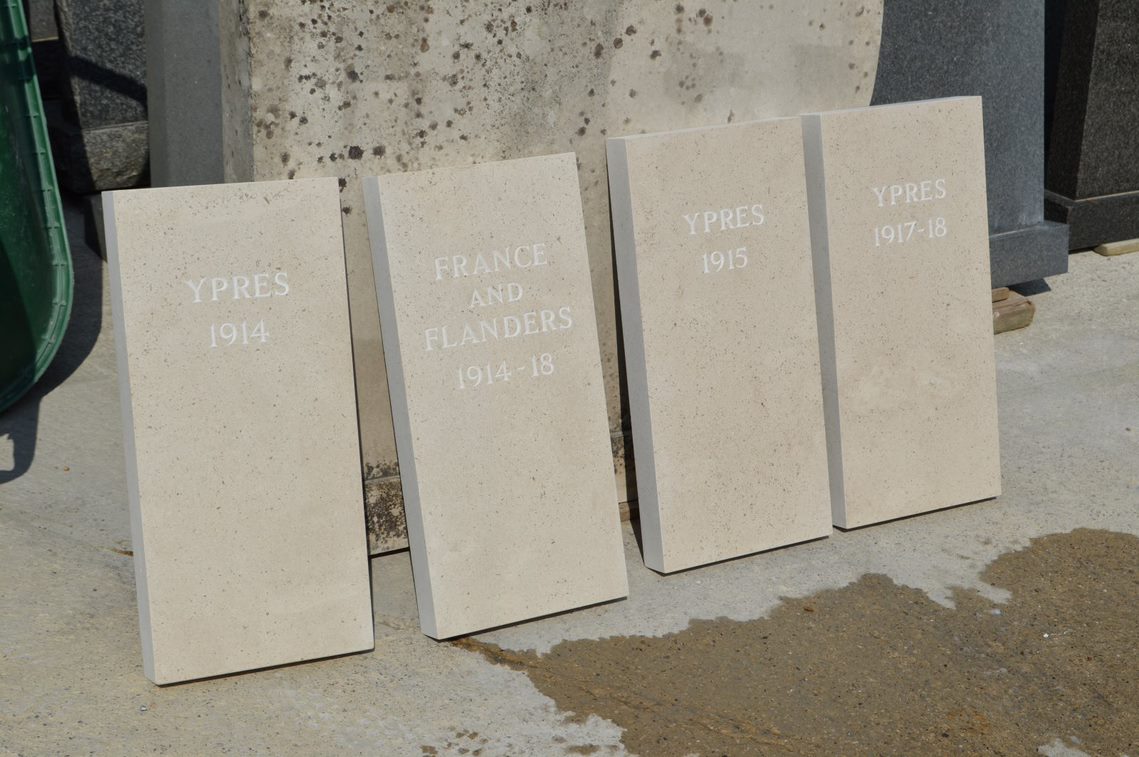Headstones
These four stones are based on the Commonwealth War Grave Commission (formerly Imperial War Grave Commission) headstones – but 30% reduced in face size.
They were sourced and produced in nearby Middleton close to Hopton Wood Quarry, which at the end of WW1 was producing hand carved headstones for cemeteries on the Western Front. It is believed that stone from this quarry was also used to build the Helles Memorial in Gallipoli, on which Rennie Waterhouse’s name is among those inscribed.
Regiments were allowed a limited number of designated “Battle Honours” to be carried on their Regimental Colours, their flag. The honours chosen for these four stones cover the five years (1914-15-16-17-18) of war under which most of the servicemen from Youlgrave fought. Right from the British Expeditionary Force (B.E.F.) landing in early September 1914 through to the battalion reinforcements in the Autumn of 1918 for the final advance to victory.
The Honours were carved by the grandson of one of the stonemasons who carved some of the original headstones.


